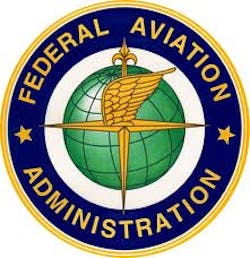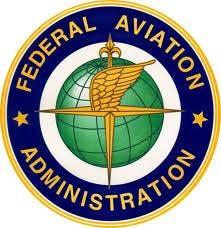Sec. Foxx: $98.1 billion DOT Budget Request emphasizes safety, innovation, opportunity
WASHINGTON, 11 Feb. 2016. The $98.1 billion the President is requesting for the U.S. Department of Transportation (DOT) in Fiscal Year (FY) 2017 “reflects an ambitious 30-year vision for this Department to take the United States Beyond Traffic and toward a transportation network that matches the changing geography of where people live and work; fosters innovation and takes advantage of evolving technology; and provides access to opportunity without regard to zip code or any other demographic,” says U.S. Secretary of Transportation Anthony Foxx.
“The FY 2017 Budget Request proposes a long-term transformation that decouples transportation from fossil fuel consumption and carbon dioxide emissions,” Foxx says. “The Administration has taken many important steps to cut our carbon footprint and mitigate the impacts of climate change, like raising fuel economy standards, making our transportation networks more resilient to extreme climate events, and taking a more comprehensive, lifecycle view in managing infrastructure assets.” (Read “Federal Aviation Administration Major Accomplishments” below.)
More needs to be done, however, Foxx admits. “Good solutions will lead to benefits such as cleaner, more sustainable transportation alternatives. This budget charts a series of steps to get us closer to that vision.”
The budget request reflects the top priority of the DOT: safety, Foxx says. “It invests in the safe integration of emerging technologies, such as unmanned aircraft systems (UAS), which have the potential to revolutionize our transportation systems, save lives, and reduce carbon emissions. It also supports rigorous regulatory development and enforcement across our safety agencies.”
This budget “underscores the need to keep America’s aviation system the safest in the world, to invest in modernizing our air traffic system, and to foster a culture of innovation and efficiency within the Federal Aviation Administration (FAA),” Foxx says. “The pace of technological change in the aerospace industry requires that the FAA have the resources and authorities needed to embrace preventative approaches to safety oversight, to be nimble in identifying risks and evaluating and integrating new technology and systems, and to remain competitive amidst changing economic conditions and increasing global competition.”
Further, the FY 2017 Budget focuses on advancing a series of funding proposals for aviation that are in line with the Administration’s core principles for aviation authorization and will support ongoing debate, Foxx describes. For example, the FY 2017 Budget request includes support for the following initiatives:
Continuing the transition to the Next Generation Air Transportation System (NextGen): The President’s Budget requests a total of $1 billion to support NextGen. This includes $877 million for NextGen Capital investments, an increase of $22 million above FY 2016, to advance modernization efforts such as performance-based navigation to optimize the use of airspace; enhancements to automation that improve the efficiency and effectiveness of air traffic management and reduce operational errors; implementation of satellite-based surveillance capabilities; improvements to data communication practices and technology that can increase productivity and capacity with little overhead; and improvements to maximize traffic flow efficiently, with commensurate time and environmental benefits. The budget also requests nearly $63 million for Research, Engineering & Development, to support both NextGen and other areas such as environmental and unmanned aircraft safety research.
Maintaining the safest aviation system: The budget includes $1.3 billion for the FAA’s Aviation Safety Organization to ensure the continued safety of the air transportation system. This includes an increase of $2.9 million for critical work related to the safe integration of UAS and an increase of $500,000 to enhance safety data capabilities within the Hazard Tracking System for the collection of safety information within the Hazard Tracking Tool.
You might also like:
Subscribe today to receive all the latest aerospace technology and engineering news, delivered directly to your e-mail inbox twice a week (Tuesdays and Thursdays). Sign upfor your free subscription to the Intelligent Inbox e-newsletter at http://www.intelligent-aerospace.com/subscribe.html.
Connect with Intelligent Aerospace on social media: Twitter (@IntelligentAero), LinkedIn,Google+, and Instagram.
Federal Aviation Administration Major Accomplishments (2009–2015)
The FAA is proud of the accomplishments achieved in recent years, which include: ► Safety Record: Aviation has never been safer. The U.S. Commercial Aviation Industry is one of the safest in the world. Since 2009, the U.S. has made dramatic reductions to general aviation fatalities. Key to this was the implementation of new rules for pilot training and certification, qualifications, and minimum rest requirements.
► NextGen Implementation: The FAA and the aviation community achieved the safest period for commercial and general aviation in history. At the same time, the agency also worked with aviation stakeholders to transform our air traffic system with the Next Generation Air Transportation System, or NextGen. This transformation included a transition from ground-based radar to satellite-enabled technology to track aircraft in flight, modernizing the underlying air traffic control automation systems, and vast improvements in the way controllers and pilots share critical safety information.
► Risk-Based Compliance: Safety is the FAA’s primary mission and the agency is implementing a new, risk-based compliance philosophy that will continuously improve upon an unprecedented aviation safety record. We are using this risk-based approach for decision-making as we oversee the safe integration of Unmanned Aircraft Systems (UAS) into the airspace system. In the spring of 2015, we released the small UAS Notice of Proposed Rulemaking and will be final¬izing that rule in 2016. On December 21, 2015, we launched a streamlined, web-based registry system for small unmanned aircraft. As we oversee the regulatory framework for the safe introduction of new technologies such as UAS and commercial space into our Nation’s airspace, we also are working to ensure these new users are trained to operate safely.
► Improving the Flying Experience: Over this period, we also implemented new rules for pilot training and certification, qualifications, and minimum rest requirements to ensure the flying public that we see the best set of skills in the cockpit. Another significant improvement to the passenger experience was the authorization for airlines to safely expand passenger use of Portable Electronic Devices (PEDs) during all phases of a flight.
► Implementing Modern Technology: Passengers will also benefit from many of the NextGen technologies and procedures we put in place over the last few years. Through the Metroplex initiative, we implemented new Performance Based Navigation procedures that use satellite technology to enable controllers and flight crews to know exactly when to reduce aircraft thrust, reducing flying time, fuel consumption, and noise. The combination of new GPS-based procedures and Wake Turbulence Re-categorization has saved millions of dollars in fuel costs for the airlines and reduced greenhouse gas emissions for the environment. And, we have invested over $28 billion in new runways, airport surface infrastructure, and other safety improvements since 2009.

